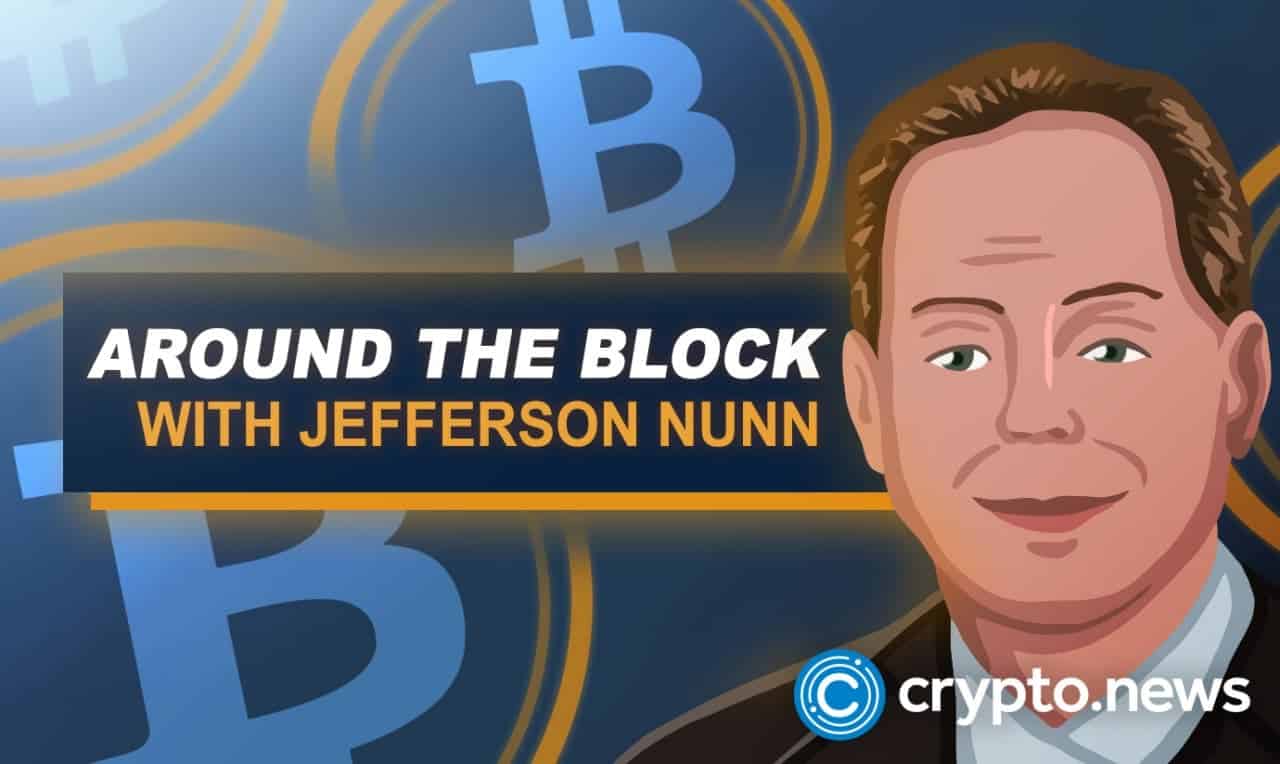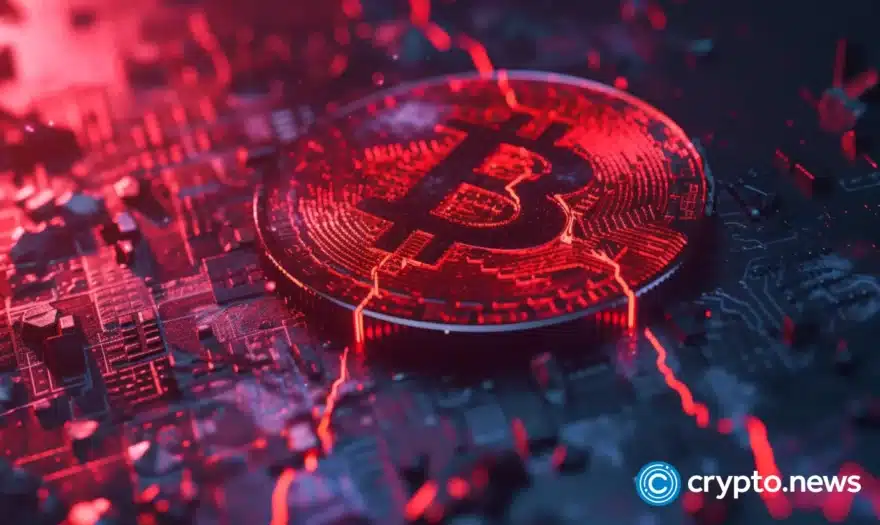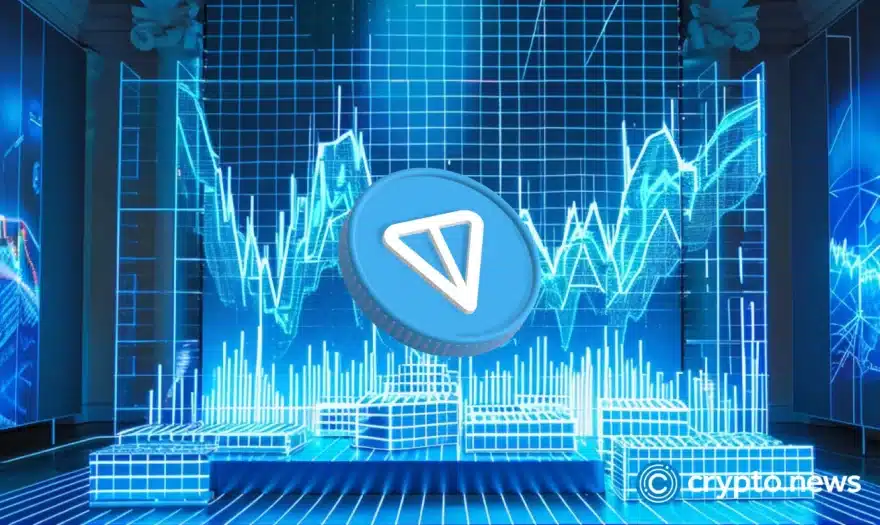One Confirmation with Jefferson Nunn – the four things about NFTs with Dr. Dark, and more!

To listen to this Podcast please follow this link: One Confirmation with Jefferson Nunn – the four things about NFTs with Dr. Dark, and more!
Jefferson: Would love to turn this into an article.
Dr. Dark: That’s actually cool. Zoom just told me you started recording.
Jefferson: Yes.
Dr. Dark: Just start whenever you want to ask the question.
Jefferson: Yes, you mentioned the four things about NFTs. And how that NFT’s space is out there, why gas fees are so high on Ethereum, and people don’t mind paying $30, even $100 per transaction where it used to be $0.50. So yes, all you.
Dr. Dark: Yes.
So, the way I see what’s happened in the last six months, and this is partially it’s kind of an outsider view of looking in, is obviously it starts with kind of a bit of a mania, like the ICO craze in 2017. You know, these entities were just new, and no one really know how to price them. And it just like the ICO is, it turned out that Mark was willing to bear a lot higher price than people originally thought. So all the early entities were, you know everyone’s flipping everything for 2x, 3x, 5x, 10x, but they’re paying for it. So that obviously brings a bunch of money into the market. I think some of the really high prices early on-I should step back a second, there is some reason to believe that at the beginning, when a lot is NFT’s were $100, $200, that they’d be worth a lot more than that in the future, just from being 20 years in the future, if you can say you have one of the NF T’s that was from kind of the first wave of them. Simply just from a collectors perspective, there’s probably some value in that. So, I can see why people were thinking, “Oh, that’s worth more than $100,” you know, even if it’s just a JPEG of something silly. So after that, you started seeing some really high prices for some things. And I think this was in part, some of the guys who got rich and crypto that have $100 million dollars, billion dollars now. Again, wanting a piece of that history, but also kind of a way to give back to the community, they can find some cool collection and kind of reward some early people that were in that, buy 30 of them and some set for $5,000 each, gifts to some new guys some money. And so we’ve seen some indications of that on social media and people talking about and then some chatters of that kind of in Telegram groups here there.
And I think from there, it started to end, who knows what these things should be worth, right. And so from there, you started seeing, I think, some money moving into the money laundering. And, in an NFT collection is 10,000. And it only has three or four ultra-rare ones, there really is no way for an external auditor to say what the price of that super rare one should have been. So, if you need to launder some money around, you can have someone buy one for $50,000 and then have someone pay you $1 million for it a week later.
Now, you’ve now cleaned up some potentially illicit money in a market that. Who can say it wasn’t worth that. I think that has led to some less nefarious but probably still legal tax avoidance schemes. Where because of the volatility in markets, you’ve made a bunch of money in crypto this year, buy an NF T for $100,000 sell it for $20,000 to somebody you know, and now you take in an $80,000 paper loss to offset your $80,000 in crypto you’ve gained, right. So, I’m not saying that’s widespread, but I think it explains kind of some of the crazy volatility in some of the rare end of the NFT space.
And coming from that now, because there’s so much money in it just like ICOs everyone on their brother has rushed to do kind of NFT. And most of them are trash, I would say as in the ICO bubble, but it has really inspired a kind of creativity from the arts art scene. So a lot of people who are good artists, we didn’t really have a market to quickly sell some of their work suddenly can put their kind of art up and people are suddenly willing to pay $300, $500, $1,000 for it. And so I’ve seen an increase in less technical people I know, who like NF Ts, who are kind of browsing these markets, and they’re not really buying them for investment purposes. They’re buying them because they like the actual art, these are people that have $1,000, $3,000 paintings in their apartments, and they go, “Oh, this really cool piece of art, yes, this is worth $800 to me”. And as a side bonus, if you’re kind of participating in the cool hip thing, and maybe it goes up in value, that’s great, but from their perspective, they’re spending $800 on it, then a few hundred to go get that thing framed or mounted, and they’re just putting in their house.
So, there is a lot of money in actual art. And there is no doubt that there’s a lot of other use for NFTs but NF Ts for art is going to be standard, there isn’t going to be a piece of art that sold it’s not NFT if that’s not going to be the proof of ownership or in the future, whether that’s 5, 10, 15, 20 years, it’s going to be entirely ubiquitous. So, there’s that and then now, because there’s so much saturation in the market, you have to do more than just kind of make interesting art or in some cases, bad art to get people’s attention. You really have to build a kind of community around it. So the ones that are thriving now are the ones that are trying to do every other part of the kind of community social experience, so there’s kind of games where you have to have an NFT to get in various parts of the game, or they’re just trying to build their Telegram and Discord around real events, around the future promise of metaverse stuff. So 3D art, and the matrix that’s coming, you log into your Facebook, augmented reality or VR.
And the social things become cool, because the higher value the NFTs in the social group, in some sense, the more the creators can sort of monetize that group. So if you have bought a yacht club entity that you got $4,000, that the floors $180,000 now. If they host some island party next year, which has been kind of rumors, I’m sure, you know COVID notwithstanding. Anyone who’s going to come to that, if you have to have one, one NFT gets you, you and a guest, whatever can come, well, anyone who’s willing to hold a JPEG of an ape, and not sell it for $200,000 is someone who’s not going to buy a vodka soda, when they get there, right. You can make deals, and you can make deals with the resort, you can say, “Hey, we’re bringing in probably a thousand people or 500 people out of the maybe the 3,000 holders of those, these are the high-end people who you want and we’re going to bring all this money in. And so we want a 40% discount on the hotel rooms, et cetera. So you can start monetizing these groups. And then that’s kind of the last stage of that. So the ones that are successful are the ones that have kind of a whole community ecosystem around it. And it’s kind of monetizing the game of art. So, there are all sorts of ones now that are, you know, if you have our drop one and our drop two, you can mint our drop three. And then if you’re holding these, you get tokens, which you can use to buy merch, and you can only buy merch that has the picture of the NFT you own on it. Or you can sell merch about NFT to somebody else, and you make a profit. So there are these really creative, interesting things that if you’re kind of in the crypto space to kind of just fun dopamine hits, if you got in some of these early and you’re kind of in some of these spaces.
So, I think like the ICO bubble, almost all of these are going to absolutely crash in value, some will remain is kind of the OG ones. And then over time, we will see this increase in the kind of the interactivity and the digital nativeness of sort of the art itself, in being able to lend it to people, stock art type, decentralized stock art, where you can kind of generate them. And every time people use them, you get paid, or if they add that design to whatever product you’re selling, you get paid. So it will become a very interesting dynamic market. And I I hope that enough people that are hearing about it now are buying stuff that they like the art of, because it’s hard to say whether the crash will come in two months or six months, but the total market capitalization of let’s say, NFTs has to be coming at some point for a big crash before, who knows, maybe it’ll be higher in the future, obviously. But, just like the ICO, it depends on some will go basically to zero and some will go up. So, that’s kind of what I see happening. And that’s just NFTs in the art space, which I think ultimately in the 20-year timeline, the art space is going to be one real pillar in the NFTs. But it’s going to be a small fraction of the total NFT value.
Jefferson: Yes, fantastic.
What do you think about sites like the museum cryptocurrency art?
That’s now starting to try to host galleries and things like that, just really all of these different efforts to try to get NFTs more accessible.
Dr. Dark: Yes, so I really liked the real-world stuff. And maybe that’s because it’s coming up with kind of COVID restrictions everyone’s looking for after to go out.
But, yes I see that as definitely the future. I think that there’s no doubt at almost every gallery, everywhere you go in the future, you’ll be able to scan your phone and kind of see the transfer of ownership and all sorts of stuff as well as being able to kind of lend out and monetize the art you have, right. So, you can lock it in a smart contract and say, for the next 80 days, 90 days, I don’t own it. So I’m legally not allowed to be posting it in my ads. But this ad company now owns it, they can post ads in Times Square, do whatever they want with it. So I like that. And I think the more people integrate this into the physical world, the better it’s going to be. There are lots of people trying to do stuff like this for the art itself. But then also just as a membership, right. So, if you have NFTs with under certain collections of stuff, then you don’t have to pay to get into the museum that day, things like that. So there are all sorts of kind of social club aspects to it. But I think ultimately, the end game for the art stuff in terms of value is going to be I think, in the 3D models in the metaverse. So, when you’re walking around, flexing with your friends, whatever in this virtual environment. There are a million of his shirt but there’s only one of us gold one. It’s like human beings like to flex someone will pay $5 million to be the only guy walking around in the kind of fortnight VR in the gold shirt.
Jefferson: Tell me a little bit more about this metaverse, I’ve been hearing about it from Facebook, which supposedly is evil overlord, Microsoft, HTCC Vive, their flow devices, supposedly really fed up with a metaverse. What’s just metaverse thing.
Dr. Dark: So essentially, it’s kind of a catch-all world for the augmented reality and virtual reality interconnected future. So the idea is, you know, people used to play in physical space, you know, you’ve run over your friends play physical space, the last 15 years, people of my age and kind of younger grew up sort of playing with their friends virtually, playing Halo playing Call of Duty and kind of a virtual world. And we’re going to move to where you’re sort of where you put on VR goggles, like HTCC Vive, Facebook, and you’re in a fully 3D space, and you’re running around just doing random stuff with those people.
Jefferson: Like free guy.
[cross-talk]
Dr. Dark: Yes, like free guy.
You’re in there, you’re doing stuff. Facebook wants to own this, I hope for everyone’s sake, that they don’t end up owning the whole space. But there’ll be kind of interconnected patches, we can kind of like load in between servers, and then kind of go on adventures, or–
Jefferson: I think to go into there, not the Facebook space, my bad–
Dr. Dark: Yes.
But even little stuff, like, you know, I think there’s going to be a lot of remote work, as the VR goggles get smaller, and smaller, and smaller, and lighter, and lighter and lighter, and they’re less stressful, they get higher resolution, and they’re more lifelike.
Jefferson: Flow is like, half the way, not compatible with anything.
Dr. Dark: Everything, right.
It’s all getting better, there are some physical limitations to these things that can’t get worked out first, and some people get a little motion sick. And part of that is due to the latency for which you move your head to the time, the big moves cause responses in your brain that are not going away, and some of those latencies kind of can’t go to zero. So, those can be improved as other issues with-when you see something at a distance with your binocular vision. You judge distance by the different pictures your eyes see.
Jefferson: The horizon.
Dr. Dark: The horizon, but when you look at something that’s 20 feet in front of you in real life, versus something that’s where your eyes actually focus a centimeter in front of you. Your brain thinks it’s 20 meters that can cause some discomfort. So there’s something that is not going to change, but it’s going to be dramatically, dramatically better.
Jefferson: The metaverse thing.
Dr. Dark: Yes.
Jefferson: How can crypto interface with the metaverse space?
Dr. Dark: So there’s decentralized trust in terms of what items people have really got transferred to not be able to duplicate them, who owns what parcels of land who owns what resources in the game let’s say. So that’s all going to be kept on-chain for the trust. And so you can interoperate between anything. So, if these bearded guys make a cool 3D apet or something, and that’s really popular, then anyone who’s implementing any virtual worlds, if they’re able to load in those models, and put them into their game, it’s more likely they’re going to get those guys to go over and try the product. And since those guys are all holding million-dollar NFTs or whatever, at the time, this happens. They’re kind of cool kids that are going to bring people with them. So there’s a sense of like interoperability that happens in between these virtual environments that you need decentralization for, and that’s kind of where crypto is [unintelligible 00:13:37].
Jefferson: So Tik Tok influencers really don’t have anything associated with them other than the count of a number of followers. Now, there’ll be more crypto-proof.
Jefferson: 100%.
Jefferson: Up there, I guess following.
Dr. Dark: For following up on their influence, who’s bringing who over to why as well, they’ll be able to monetize their brand in general, right. So for example, there’s a company to beta right now called Galaxy. And they’re doing social tokens for-they call it creators right now, sort of famous people. It’s co-founded by a current NBA player. And so they have a lot of high-ranking people that are going to be on at the start. But the idea for that is at step one for this kind of performative versus being able to issue a social token and for your fans saying, I’m going to do an hour live stream once a week, I’m going to get presale tickets, but you have to have a certain number of my tokens to do that. So the more value you can bring to the world. And the more people you can attract to the things that you’re promoting or selling, right, the more value goes like there’s a literal market for your brand identity and kind of your clouds. And, the technology to do this kind of at scale kind of cheaply is now becoming a thing. So, that idea is going to expand further and it’s going to enter into the kind of purely virtual world.
Jefferson: That’s awesome.
Any final thoughts on NFTs, metaverse, and more?
Dr. Dark: It’s super exciting. I worry about the kind of corporatization of it. The long arc of history suggests that a lot of things are really fun. And then eventually they get locked down by corporations and governments. If history is any guide, we certainly have probably a good 10-15 years to enjoy before that happens, so you don’t get to enjoy it. It’s a hope that they don’t come for it as quick as they did with the internet and some other things, but there’s always a nice Wild West period. So, we have we haven’t even really started in the metaverse probe yet. So, should be a fun 10 years.
Jefferson: Alright, cool.
Well, great to hang out with you.
I Appreciate it.
Thanks.
Dr. Dark: Yes, thanks.












